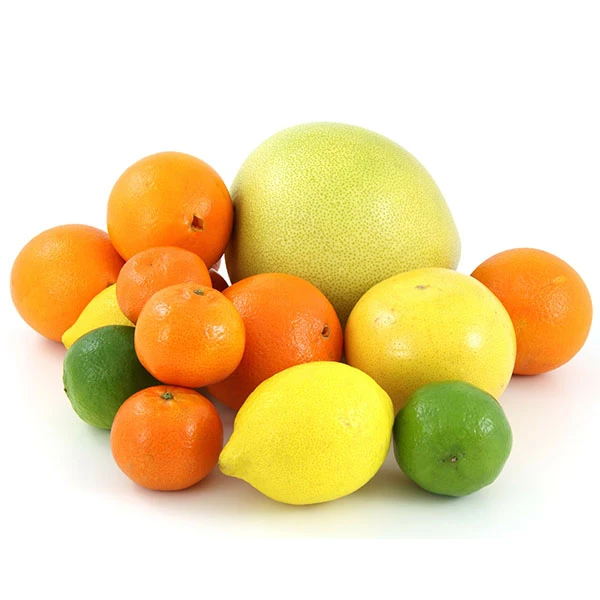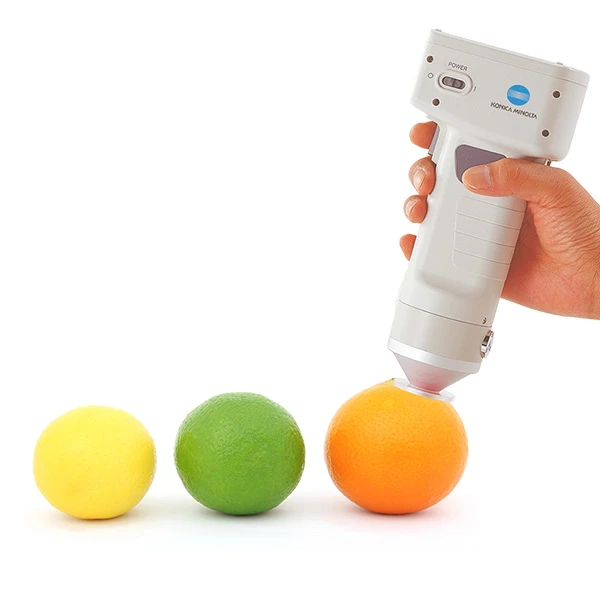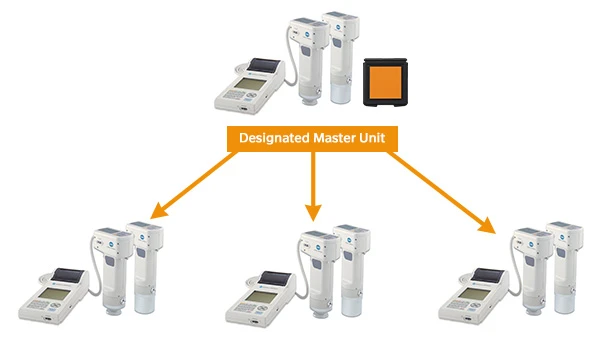การวัดสีผลไม้ตระกูลส้ม

สีของผลไม้เช่น ส้ม มะนาว ฯลฯ เป็นสิ่งแรกที่ผู้บริโภคสังเกตและมักใช้ในการพิจารณาความสดและคุณภาพรสชาติ สีของผลส้มยังมีบทบาทสำคัญในทังก่อนการเก็บเกี่ยวและหลังการเก็บเกี่ยว กระบวนการสุกของผลส้มนั้นมีลักษณะเฉพาะจากการวิวัฒนาการของสี และมักใช้เป็นตัวบ่งชี้ในการกำหนดเวลาเก็บเกี่ยวที่เหมาะสม ตัวอย่างเช่น ส้มที่ยังไม่สุกจะมีสีเขียว และจะเก็บเกี่ยวได้ดีที่สุดเมื่อเปลี่ยนเป็นสีส้ม หลังจากการเก็บเกี่ยว ผลไม้รสเปรี้ยวจะถูกจัดเรียงตามสีเพื่อแยกผลไม้ที่ต้องผ่านกระบวนการคัดแยก
โดยทั่วไปจะมีการประเมินสีของผลส้มด้วยสายตา ถึงแม้ว่าจะเป็นวิธีที่รวดเร็วและไม่แพงในการประเมินสี แต่ก็มีแนวโน้มที่จะมีข้อผิดพลาดได้จากการรับรู้และอธิบายสีของมนุษย์ในการเลือกสี นอกจากนี้ สีและแสงโดยรอบยังส่งผลต่อการประเมินสีอีกด้วย
เครื่องมือวัดสีมีอยู่อย่างแพร่หลายและใช้กันอย่างแพร่หลายภายในอุตสาหกรรมอาหารเพื่อการประเมินสีที่รวดเร็ว สม่ำเสมอ และตรงตามวัตถุประสงค์

เครื่องมือวัดสี จึงสามารถประเมินสีของผลไม้รสเปรี้ยว เช่น สีเขียวและสีเหลืองได้อย่างง่ายดายโดยใช้CIE L*A*B*และCIE L*C*H โดยใช้ช่องว่างระหว่างสีผ่านปริภูมิสีสามารถตั้งค่าสำหรับการประเมินผ่าน/ไม่ผ่านอย่างรวดเร็วได้ เครื่องวัดโครมาของ Konica Minolta CR-400 ซีรีส์ ที่ใช้กันอย่างแพร่หลายในอุตสาหกรรมอาหารและส่วนผสมอาหาร ช่วยให้การทำงานมีความเรียบง่ายพร้อมกับความทนทานและความน่าเชื่อถือของค่าสี
โดยโครมามิเตอร์ CR-400 สามารถวัดพื้นที่ในระยะ Φ8 มม. และโครมามิเตอร์ รุ่น CR-410 สามารถวัดพื้นที่ได้ Φ50 มม. ช่วยให้สามารถประเมินสีของผลส้มได้อย่างรวดเร็วและตรงตามวัตถุประสงค์ และเหมาะสำหรับการใช้งานทั้งในห้องปฏิบัติการและภาคสนามในสถานที่ นอกจากปริภูมิสี CIE L*a*b* และ CIE L*C*h แล้ว ยังสามารถตั้งค่าสูตรการประเมินหรือการคำนวณที่ผู้ใช้กำหนดได้สำหรับแอปพลิเคชันควบคุมสีเฉพาะอุตสาหกรรมอีกด้วย
ซีรีส์ CR-400 มาพร้อมกับฟังก์ชันการสอบเทียบที่โดยผู้ใช้เป็นผู้กำหนด ซึ่งช่วยให้การสอบเทียบหลายยูนิตเทียบกับยูนิตหลักที่กำหนดได้ ช่วยลดความไม่แน่นอนในการวัดและสามารถทำการวัดซ้ำๆโดยมีค่าที่คงที่

อุปกรณ์เสริมที่หลากหลาย เช่น เซลล์แก้ว จานเพาะเชื้อ ตัวยึดตัวอย่าง ฯลฯ มีให้เลือกใช้เพื่อจัดการกับตัวอย่างประเภทต่างๆ ตั้งแต่ของแข็งและผงไปจนถึงของเหลวที่มีลักษณะเป็นเนื้อครีมและทึบแสง
วิดีโอเพื่อเรียนรู้เพิ่มเติมเกี่ยวกับความเรียบง่ายและความยืดหยุ่นของ Chroma Meter CR-400 ซีรีส์
หากต้องการความช่วยเหลือในการวัดสีของผลส้มหรือมีปัญหาในการวัดสี สามารถติดต่อผู้เชี่ยวชาญด้านการใช้สีของเราเพื่อคำปรึกษาหรือความช่วยเหลือฟรี
